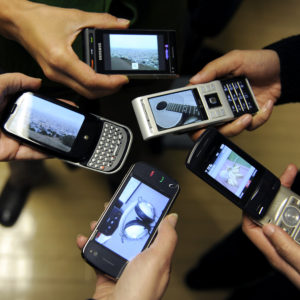The Federal Communications Commission has given a green light for wireless carriers to use controversial new technology known as LTE-U to start offloading broadband traffic from crowded wireless networks onto airwaves reserved for WiFi and Bluetooth devices.
FCC Chairman Ajit Pai announced the decision Wednesday, in which the agency’s Office of Engineering and Technology certified the sale of the first LTE-U capable smartphones by Nokia and Ericsson.
“Today, the commission announced authorization of the first-ever LTE-U (LTE for unlicensed) devices in the 5 GHz band,” Pai said. “This is a significant advance in wireless innovation and a big win for wireless consumers.”
LTE-U is an expansion to 4G LTE networks that will let wireless carriers use the unlicensed 5 gigahertz band previously reserved for WiFi and Bluetooth devices. The technology allows smartphones to transmit internet traffic over less-crowded airwaves when wireless carriers’ licensed networks are bogged down with heavy traffic.
Carriers have seen a sharp increase in mobile broadband use with the rise of smartphones and data-heavy applications like video streaming. Some have estimated they’ll run out of available spectrum by 2020, prompting regulators to look for more by buying unused airwaves from broadcasters, selling it to wireless providers and freeing up airwaves unused by the federal government, which holds some 60 percent of all spectrum.
LTE-U is a band aid solution, but a controversial one. WiFi broadcasts over unlicensed airwaves, searching for an open channel before broadcasting. LTE-U conducts a search but will broadcast immediately on the least-congested frequency instead of waiting for an open channel. Critics say that will cause interference with WiFi devices.
Incumbent carriers supporting LTE-U believe the two can coexist without interference, but Google, Microsoft, and others are skeptical. Both filed their own findings with the FCC, which concluded the technologies won’t play nice together without rigorous rules in place to protect WiFi.
Both sides presented their cases to the FCC, which launched a proceeding to examine the issue during the previous administration.
In addition to devices like routers, there are small wireless carriers now who rely entirely on WiFi networks to provide service. Some argue in exchange for big carriers using LTE-U, the FCC should approve technology dubbed WiFi-L, which would let WiFi networks use airwaves licensed for use by big wireless carriers when available.
“LTE-U allows wireless providers to deliver mobile data traffic using unlicensed spectrum while sharing the road, so to speak, with Wi-Fi,” Pai said. “And voluntary industry testing has demonstrated that both these devices and Wi-Fi operations can co-exist in the 5 GHz band. This heralds a technical breakthrough in the many shared uses of this spectrum.”
Pai added the technology will also be a boon for wireless consumers, who will “enjoy the best of both worlds: a more robust, seamless experience when their devices are using cellular networks and the continued enjoyment of Wi-Fi, one of the most creative uses of spectrum in history.”
Verizon, T-Mobile and device makers Samsung, Ericsson and Qualcomm all lobbied the agency in support of LTE-U.
In a blog post following the FCC’s announcement, T-Mobile said it plans to start offering LTE-U services by spring.
“Today’s FCC certification follows more than three years of extensive research, development and testing to ensure LTE-U works well alongside Wi-Fi technologies,” the post reads. “Starting in December 2016, T-Mobile was already testing LTE-U equipment as part of early field trials, so the Un-carrier has been ready to hit the ground running to bring this new technology to customers!”
Verizon said in a statement it too plans to have LTE-U ready by spring.
“As demand for bandwidth continues to skyrocket, LTE-U will enable our customers to benefit from more data at faster speeds where they live work, live, and play,” the company said.

